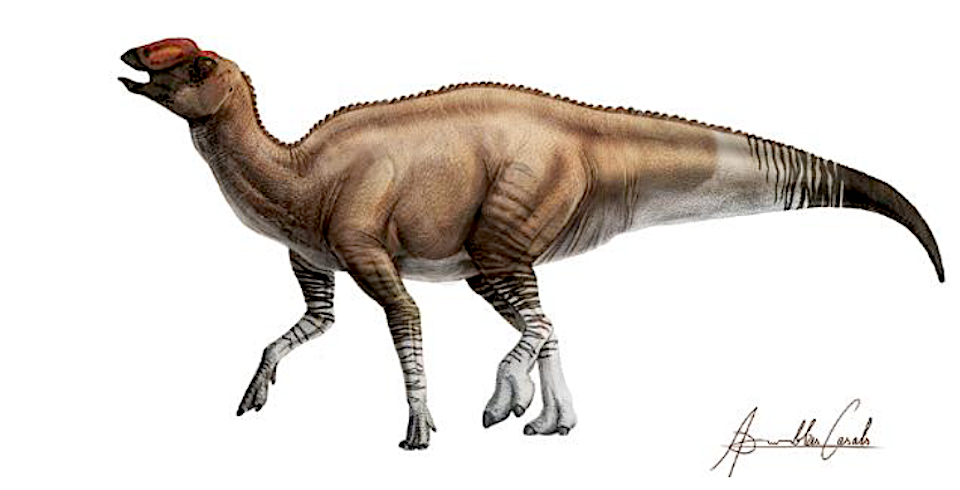Reexaminations of a fossil uncovered in the 1980s at Big Bend National Park have revealed a duck-billed dinosaur species previously uncategorizable to archeologists. The species, Aquilarhinus palimentus, is known for its aquiline nose and wide lower jaw, “shaped like two trowels laid side by side,” according to a park release.
The bones of the dinosaur were badly weathered and stuck together upon initial discovery, making them impossible to study. While it was previously believed that the recently-uncovered specimen was from the Gyposaurus genus, further analyses this year have shown that this species is more primitive than Gryposaurus and all other duck-billed dinosaurs.
“This new animal is one of the more primitive hadrosaurids known and can therefore help us to understand how and why the ornamentation on their heads evolved, as well as where the group initially evolved and migrated from,” said lead author Dr. Albert Prieto-Márquez of the Institut Català de Paleontologia Miquel Crusafont. “Its existence adds another piece of evidence to the growing hypothesis, still up in the air, that the group began in the Southwestern area of the U.S.”
This discovery is a huge deal to the scientific community as the jaw and other characteristics of the specimen reveals that it doesn’t fit with the group of duck-billed dinosaurs known as Saurophids. The recent specimen is more primitive than this group, suggesting there might have been a greater number of primitive species than we previously thought.
Saurophids had a cranial crest and the current specimen also had a bony crest, shaped like a humped nose. The discovery of a solid crest outside the group provides evidence that Saurophids and the recently discovered specimen evolved from a common ancestor.
Editor’s Note: RealClearLife, a news and lifestyle publisher, is now a part of InsideHook. Together, we’ll be covering current events, pop culture, sports, travel, health and the world. Subscribe here for our free daily newsletter.
Thanks for reading InsideHook. Sign up for our daily newsletter and be in the know.



















